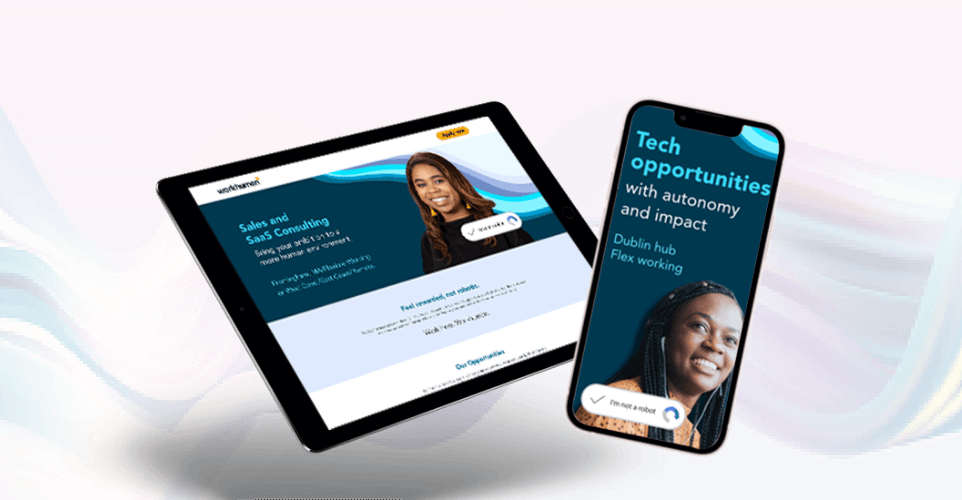Employers have a responsibility to be inclusive and diverse when it comes to hiring staff. They must ensure that plans are in place to address this during recruitment drives. DEI can affect how attractive you are as a company. It also affects how existing employees feel about the business.
The University of Michigan’s diversity officer explains Diversity, Equity and Inclusion works in the quote below.

What can I do to ensure my DEI is great?
Hiring people because they are a particular race, religions or gender, does not make a company great at DEI. In fact, this can be seen as ‘tokenism’. Making sure these factors don’t affect the hiring process, however, can improve a company’s diversity, equity and inclusion. To be truly inclusive and diverse, companies should focus solely on the individual’s experience and qualifications for the role.
Talent Works recently undertook a piece of research to find out why there’s a lack of Women in Tech. The most prominent reason was a toxic work environment. This is an example of poor DEI. All employees should have the support of the team and therefore, feel as valuable as anyone else in the company. Businesses who make a concerted effort with DEI, understand that inclusivity can contribute to making a business successful.
To attract the best talent, you must give them a reason to want to work for you. Knowing that a company makes an effort with DEI could be a deciding factor for a candidate.
Does the UK have a problem with diversity and inclusion in employment?
The University of Edinburgh reports that one in seven people in the UK is neurodivergent (more than 15%). This means that the brain functions, learns and processes information differently than others. ONS data, shows that neurodivergent people, those with learning difficulties or mental illness have the lowest employment rates. With those groups having employment rates of 30% or less, there’s a lot of progress to be made.
Talent Works’ latest whitepaper, Women in Tech, found that there are fewer women working in tech now than in 2014. The percentage of female tech employees has dropped from 26.1% in 2014 to 19% in 2022. With more tech careers available, (up from 11% to 14% of all opportunities), you’d expect more females working in tech. Instead, there’s been a decrease, highlighting a serious issue in the industry.
What can a business do to improve DEI in their recruitment processes?
This Twitter thread looks at why neurodivergent people won’t apply for a position unless they meet all of the criteria. This is just one example of some of the issues around recruiting neurodivergent people. To become properly diverse and inclusive, businesses need to ensure the application process considers all people. Doing a few things differently could have a positive effect on the application and interviewing process for everyone. Some of the following tips will contribute to a fairer recruitment process.
- Change language of adverts
- Be specific with requirements (Bullet points can be very helpful)
- Build adaptability into the application process. Option of in person/online meetings, a message saying ‘happy to discuss any reasonable arrangements required’.
- Don’t include unnecessary information like ‘must have strong teamwork skills’ if the role doesn’t specifically require it.
- Use blind recruitment processes where possible – helps remove unconscious bias.
- Don’t make a big deal out of small errors – the applicant may be dyslexic and otherwise perfect for the role.
- Ensure the work environment considers everyone’s needs and sensitivities. This may relate to gender identity, religion, race or other needs such as those who are neurodivergent.
‘Blind hiring’ can be implemented to ensure there’s no bias during your recruitment process. This practice removes personal and demographic information, so people can only be assessed on their skills and experience. As well as the more obvious ones such as race, religion & gender, other information might create bias when hiring. Asking which University or College they went to or what their hobbies and interests are, is an example of this. Checking social media accounts of candidates may introduce bias, as people’s social accounts often contain photos, opinions and other personal information on there.
How to maintain diversity, equity and inclusion in your company.
Now more than ever, DEI is an important part of the recruitment stage. However, it’s just the one small part of you as a business being diverse, inclusive and equitable.
Having this continue throughout an employee’s time with you is a separate challenge. The principles you used in your hiring should then continue on in the workplace. Career opportunities should be equally available to all and everyone in the business should have a voice. Including people in meetings, events and activities where possible (and relevant) can help ensure . This may mean having to adapt the office, create processes and initiatives, and implement programs that deliver DEI.
Don’t overlook your leadership team when developing your company’s DEI. It’s not just the rest of the team that needs to be diverse and inclusive. It’s important that the leadership team reflects the company values, too. This may require training, as there are numerous potential pitfalls that can occur when companies are trying to be inclusive. ‘Tokenism’ is one – the business may have good intentions by hiring someone with a different ethnicity, gender or sexual orientation, however, this doesn’t reflect true diversity. It can also backfire, as individuals may not feel comfortable if their culture is not the dominant one. They may instead try to fit in, which can dampen the effects of having more diverse teams.
What are the potential benefits of being more inclusive and diverse with your recruitment?
By ensuring your team is more inclusive and diverse, your business will benefit from unique ideas, contributions and innovations. A more diverse workforce may also help to generate a wider variety of partners and more diverse opportunities.
Lower employee turnover is often a positive outcome of being a diverse, inclusive employer. Going hand in hand with that, is increased job satisfaction. If people feel supported at work regardless of their background or beliefs, they’re more likely to be a loyal employee.
Another significant benefit of being more diverse and inclusive is you instantly increase your talent pool size. For example, Talent Works’ Women in Tech research showed that less women are working in tech. As previously mentioned, they feel the environment is toxic, and therefore not inclusive of them. Given that there are more females than males in the UK and the US.
The below diagram from the University of Edinburgh, outlines some of the benefits that people with neurodiversity conditions may bring to a business. The list is not exhaustive, and the strengths outlined here are not applicable to every neurodivergent person. But these are qualities that employers value and ones that make people a great addition to a team.

If you’re thinking about working with a provider of RPO or Embedded Talent solutions, we’d love to pitch for you. With specialisms in the tech sector and helping businesses expand their technical and digital capacities, we help some of the world’s most exciting enterprises scale.
As an RPO and Embedded Talent solution provider based in the UK, US, and more recently, South Africa, our teams have truly global reach and can help you expand into new territories.
To find out more about how our flexible approach to recruitment can help you or to let us know more about your future recruitment projects, contact us.







